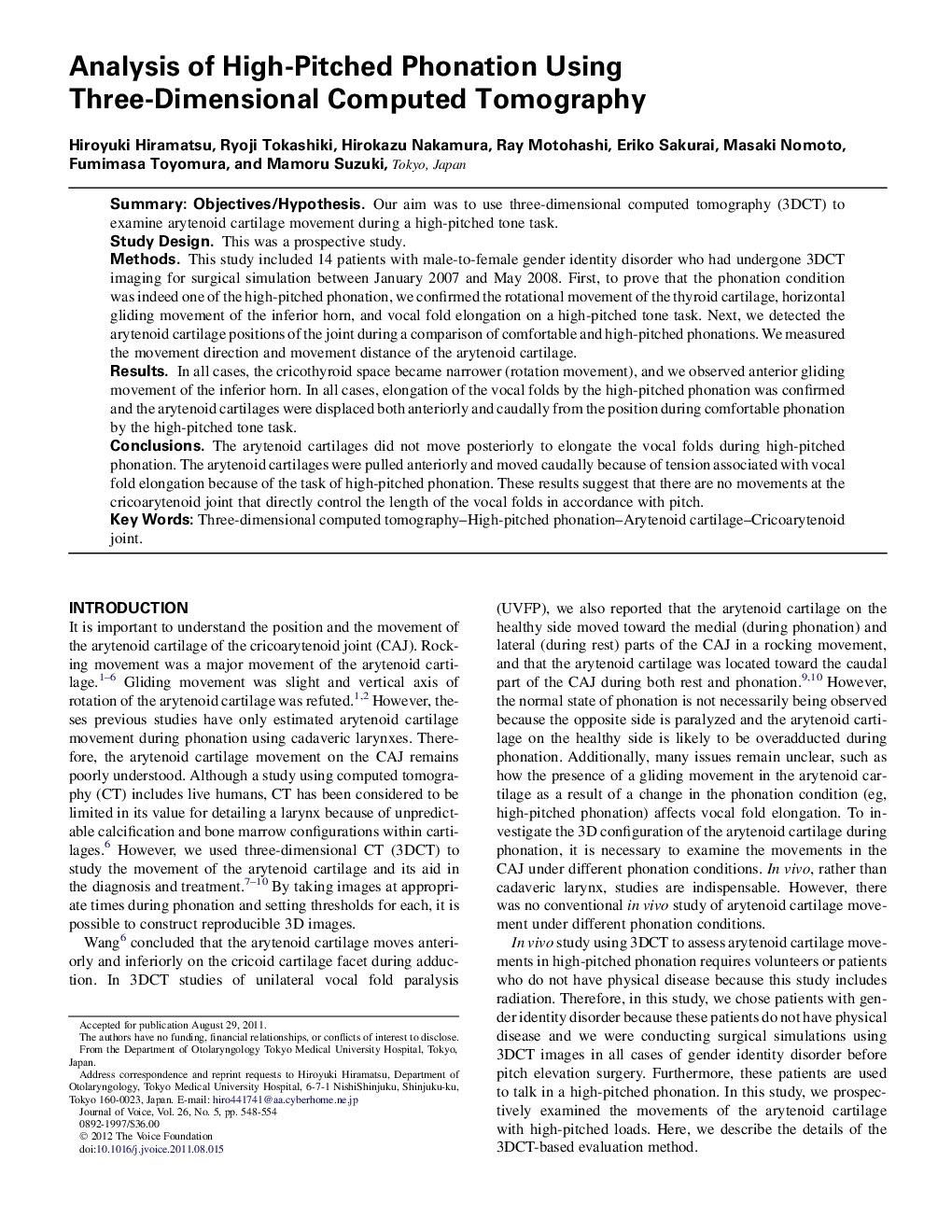| Article ID | Journal | Published Year | Pages | File Type |
|---|---|---|---|---|
| 1101529 | Journal of Voice | 2012 | 7 Pages |
SummaryObjectives/HypothesisOur aim was to use three-dimensional computed tomography (3DCT) to examine arytenoid cartilage movement during a high-pitched tone task.Study DesignThis was a prospective study.MethodsThis study included 14 patients with male-to-female gender identity disorder who had undergone 3DCT imaging for surgical simulation between January 2007 and May 2008. First, to prove that the phonation condition was indeed one of the high-pitched phonation, we confirmed the rotational movement of the thyroid cartilage, horizontal gliding movement of the inferior horn, and vocal fold elongation on a high-pitched tone task. Next, we detected the arytenoid cartilage positions of the joint during a comparison of comfortable and high-pitched phonations. We measured the movement direction and movement distance of the arytenoid cartilage.ResultsIn all cases, the cricothyroid space became narrower (rotation movement), and we observed anterior gliding movement of the inferior horn. In all cases, elongation of the vocal folds by the high-pitched phonation was confirmed and the arytenoid cartilages were displaced both anteriorly and caudally from the position during comfortable phonation by the high-pitched tone task.ConclusionsThe arytenoid cartilages did not move posteriorly to elongate the vocal folds during high-pitched phonation. The arytenoid cartilages were pulled anteriorly and moved caudally because of tension associated with vocal fold elongation because of the task of high-pitched phonation. These results suggest that there are no movements at the cricoarytenoid joint that directly control the length of the vocal folds in accordance with pitch.
